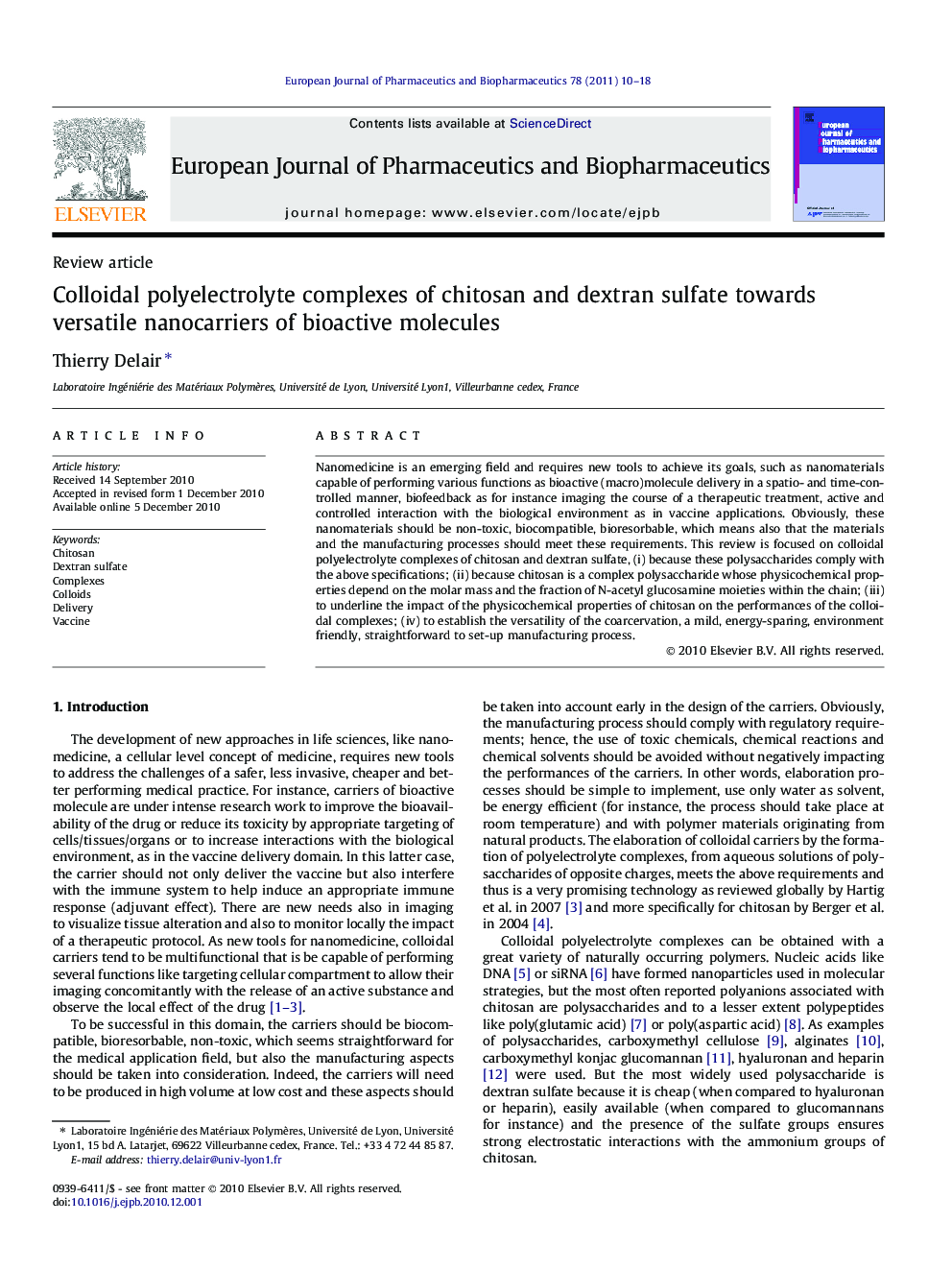| کد مقاله | کد نشریه | سال انتشار | مقاله انگلیسی | نسخه تمام متن |
|---|---|---|---|---|
| 2084180 | 1545370 | 2011 | 9 صفحه PDF | دانلود رایگان |

Nanomedicine is an emerging field and requires new tools to achieve its goals, such as nanomaterials capable of performing various functions as bioactive (macro)molecule delivery in a spatio- and time-controlled manner, biofeedback as for instance imaging the course of a therapeutic treatment, active and controlled interaction with the biological environment as in vaccine applications. Obviously, these nanomaterials should be non-toxic, biocompatible, bioresorbable, which means also that the materials and the manufacturing processes should meet these requirements. This review is focused on colloidal polyelectrolyte complexes of chitosan and dextran sulfate, (i) because these polysaccharides comply with the above specifications; (ii) because chitosan is a complex polysaccharide whose physicochemical properties depend on the molar mass and the fraction of N-acetyl glucosamine moieties within the chain; (iii) to underline the impact of the physicochemical properties of chitosan on the performances of the colloidal complexes; (iv) to establish the versatility of the coarcervation, a mild, energy-sparing, environment friendly, straightforward to set-up manufacturing process.
Colloidal polyelectrolyte complexes from Chitosan and Dextran Sulfate are formed by charge neutralization in aqueous media, without toxic chemical nor emulsification step. Hence, a great variety of bio-active molecules can be associated to these versatile carriers for potentially a large number of applications in nanomedicine.Figure optionsDownload as PowerPoint slide
Journal: European Journal of Pharmaceutics and Biopharmaceutics - Volume 78, Issue 1, May 2011, Pages 10–18